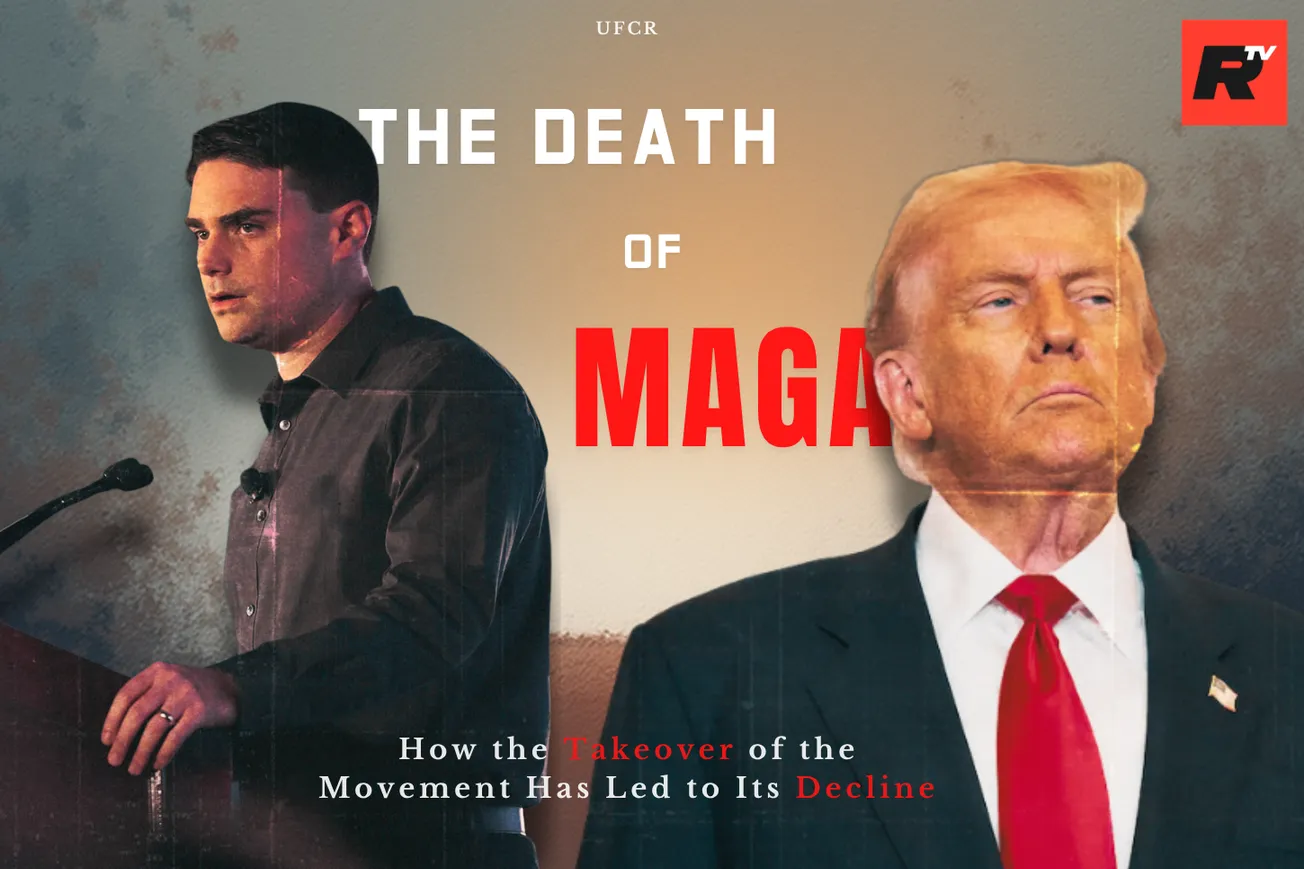We voted for Donald Trump in 2016 because the political order had left us behind. The movement's early days were characterized by conviction, not ceremony, and a belief in the power of ordinary Americans to overturn an entrenched system. For many of us, supporting Trump was an act of self-preservation. We believed that the forgotten American worker would finally be heard, that immigration policy would prioritize citizens, that foreign entanglements would be curtailed, and that a political class uninterested in our prosperity would finally be confronted.
However, after almost ten years, it's challenging to overlook the disparity between those assurances and the policies that the Trump administration is implementing. The MAGA movement has transformed from a populist revolt into something institutional and sanitized.
Immigration, H-1B, and the Foreign-Student Backlash
The movement's promises on immigration and the workforce have undergone significant changes, frequently contradicting the 2016 vision of prioritizing American workers.
H-1B Visas: From Skepticism to Ambivalent Support
The H-1B visa program was once emblematic of what many in the MAGA base saw as the economic betrayal of domestic labor. Critics have long held that employers used these visas to import foreign labor regardless of the American workforce, thereby undercutting U.S. workers and depressing wages. Coverage at the time underscored that MAGA influencers like Steve Bannon and others publicly opposed the program.
Yet by December 2024, the man who claimed to speak for that base, Donald Trump, was telling The New York Post that:
“I’ve always liked the visas… I have many H-1B visas on my properties. I’ve been a believer in H-1B. I have used it many times. It’s a great program.” Newsweek
For many longtime MAGA supporters, the framing of the program as “great” felt like a betrayal—or at minimum a pivot they were not prepared to accept. The ideological foundation of MAGA had been built on the premise that American jobs came first; a statement praising H-1B suggested the opposite.
Student Visas and the “600,000 Chinese” Provocation
Less technical but equally consequential was Trump’s comment in mid-2025 about allowing 600,000 Chinese students to study in American universities. As Newsweek reported:
“President Trump has said the U.S. needs up to 600,000 Chinese students, sparking criticism from his MAGA supporters.” Newsweek
The context matters. On The Ingraham Angle, host Laura Ingraham challenged Trump:
“You’ve said as many as 600,000 Chinese students could come to the United States. … Why is that a pro-MAGA position when so many American kids want to go to school and there are places not for them?” Newsweek
Trump’s response:
“We do have a lot of people coming in from China … And if we were to cut that in half … you would have half the colleges in the United States go out of business.” Fox News
Foreign-Policy Choices That Deepened Internal Divisions
Previously, foreign policy served as the primary distinction between MAGA and the traditional Republican system, but the post-2024 trajectory marked a profound shift. This turn was not subtle, nor was it speculative. It was documented in the personnel Trump elevated and in the rhetoric of his administration, which embraced the establishment viewpoint that had never been aligned with MAGA’s anti-interventionist core.
A Cabinet Reflecting the Old Guard, Not the Populist Rebellion
The administration signaled during the transition period that it would appoint figures reflecting older Republican traditions to staff the foreign-policy wing of government. Senator Marco Rubio and Representative Mike Waltz, both establishment-aligned national security hawks, were appointed to top diplomatic posts such as Secretary of State and U.N. Ambassador. These individuals were described explicitly as classic foreign-policy hawks more aligned with George W. Bush–era priorities than with the “America First” doctrine.
This reporting was consistent with broader analysis. Yahoo News noted that the early list of foreign policy officials resembled the “Bush-era foreign policy bloc,” a clear visual departure from the populist expectations that shaped MAGA’s foundation.
For a movement built on defiance of the Republican foreign-policy establishment, these choices represented not continuity but inversion: the outsider had invited the insiders back in.
Increasing Commitment to Foreign Aid and Strategic Engagements
Policy talks, along with personal indications, showed a new willingness to extend more foreign aid and make deeper strategic commitments abroad. The administration's support for Israel exemplifies this, as Trump consistently prioritizes foreign interests over the lives and finances of American families.
In November 2025, Trump wrote an official letter to Israeli President Isaac Herzog asking him to pardon Benjamin Netanyahu while he was on trial for corruption. The letter was packaged as a favor after Gaza truce talks, but to the base, it screamed of undue influence from a foreign power.
The announcement of a massive $6.4 billion weapons deal for Israel in September coincided with the letter's arrival. It included Apache helicopters and assault rifles. On top of that, there is $3.8 billion in annual aid locked in until 2028, and that's not even counting the $21.7 billion in military support that has been sent to the region since the Gaza war got worse in 2023. The government has taken billions of dollars from American taxpayers to fund the unending aid. These packages contribute to ongoing wars, while we are extending our military efforts far from our borders, even as our veterans sleep on the streets and our bridges deteriorate at home.
Moreover, many in the base had previously dismissed the conflict with Iran as a mere fantasy of the neoconservatives. Barely months into his second term, in early February 2025, Trump authorized his military advisers to launch preemptive attacks if Iran crossed certain red lines, setting the stage for escalation that felt all too familiar. By June 13, Israel, under what Trump later bragged was his direct "direction and control," unleashed a surprise assault on Iranian soil, killing top generals and nuclear scientists in a barrage that Trump hailed as a "great day for Israel." Just eight days later, on June 21, the U.S. itself struck three key Iranian nuclear facilities in a series of precision airstrikes, obliterating heavily fortified sites like Natanz and Fordow. Iranian President Masoud Pezeshkian fired back in September, warning that Trump's path would "set fire" to the region, as proxy militias ramped up attacks on U.S. assets and oil prices spiked, hammering American families already squeezed by inflation. A fragile ceasefire limped into place by late June, brokered amid backchannel talks, but not before we'd committed billions in munitions, risked servicemembers' lives, and watched the military-industrial complex feast on contracts for F-35s and Tomahawks.
The uproar grew even more when the White House invited Syria's president, Ahmed al-Sharaa, a former al-Qaeda commander, to come on November 10, 2025. Trump called him a "strong leader," put a stop to sanctions for 180 days, and even gave him a MAGA hat. He was the first leader of Syria to go to the White House, but why? It was to discuss security and coalitions for the sake of Israel. The outcome was not the isolationism we had hoped for, but a startling shift towards Middle East diplomacy that left the base questioning, "For whom are we still fighting?"
The Epstein Files and the Sense of Promises Deferred
If foreign policy was the philosophical cornerstone of MAGA’s revolt against the establishment, then the Epstein scandal represented something even deeper: the possibility of accountability. The 2016 movement sprang from a distrust of institutions and the conviction that powerful networks shielded themselves at the expense of ordinary Americans. For many supporters, releasing the Epstein files, fully and without redaction, would have symbolized a break with that culture of impunity.
That disclosure never came.
Expectation vs. Reality
The movement's founding ethos aligned with transparency on such matters, leading Trump supporters to expect more. The belief that Trump would pursue full disclosure grew from statements made during earlier political cycles, when he expressed interest in exposing elite networks and promised accountability for entrenched power structures.
On November 12, the GOP-led House Oversight Committee finally released over 20,000 pages from Epstein's estate, including explosive emails that drag Trump's name back into the muck. One email from Epstein himself boasted to a reporter about offering photos of "Donald and girls in bikinis in my kitchen." The White House scrambled to downplay it all as a "fake narrative" pushed by Democrats, pinning one victim's story on the late Virginia Giuffre.
Who is actively striving to expose the truth? Rep. Thomas Massie is one of the last true America First holdouts in our ranks, the kind of principled libertarian firebrand that MAGA once celebrated. Massie teamed up with Democrats on a discharge petition to force a full House vote on releasing every last Epstein file, no redactions, securing enough signatures on November 12 to bypass leadership and drag it to the floor next week. He even went on CNN. Blunt as ever, the CNN hosts exposed the pressure exerted by the White House on others, revealing their intense lobbying efforts to prevent "giving him a win." Trump intensified the pressure, inviting loyalists such as Lauren Boebert to the Oval for private discussions in an attempt to dissuade the four Republican rebels—Massie, Boebert, Nancy Mace, and Marjorie Taylor Greene—who had broken their ranks to support the petition. Boebert held firm, but the message was clear: the administration's shielding the elite, even if it means kneecapping its own.
The base rallied behind Trump to expose people like Epstein, not bury their secrets deeper. Massie, who embodies the anti-establishment grit we lost, is facing resistance from his party, who portrays him as a troublemaker for demanding truth.
A Movement Defined by Disillusionment and Declining Momentum
Polling confirms what many supporters feel emotionally. Pew Research reported that among Trump’s 2024 voters under age 35, job approval fell from 92% in the early days of the administration to 69% by mid-2025. (Pew Research)
Bloomberg described this shift among younger voters and early supporters as “buyer’s remorse,” reflecting broad concerns about the administration’s priorities and direction. (Bloomberg)
Even within Congress, contrasts sharpened the base’s frustration. Legislators like Rep. Thomas Massie, not a MAGA figure by identity, were increasingly described as embodying the anti-establishment spirit more authentically, simply because they opposed expansion of government programs and foreign entanglements. Trump’s cabinet and advisors, by contrast, were perceived as leaning toward establishment positions, contributing to the disillusionment.
The Erosion of Youth Support: A Movement No Longer Considered Disruptive
The MAGA movement once drew huge numbers of young supporters precisely because it rejected political normalcy. But recent polling shows the opposite trend: a retreat rather than growth. A YouGov/Economist survey found Trump’s approval among voters aged 18–29 at just 25%, with a net approval of –42% in late 2025. (iHeart/Country)
Newsweek also reported a general decline in support for President Trump, highlighting the fact that "many young people are turning away from the president." (Newsweek)
CBS News analysis shows Trump began his term with strong youth approval, 55%, but that number fell to 28% within months. (CBS News)
The numbers demonstrate a simple truth: the movement that once promised rebellion now looked like authority. The youth who once saw MAGA as counterculture increasingly perceived it as another version of the establishment.
A Final Reckoning with the Movement’s Trajectory
Donald Trump once transcended his mere humanity, ascending to become the living embodiment of the disenfranchised American’s unyielding will. In an era choked by political despair, where neocons reigned supreme and the only faint whispers of right-wing rebellion echoed from isolated libertarians, he boldly seized the mantle of our deepest desires. “I am your voice,” he declared—and in that moment, he truly was. He led not through polished pretense but with raw, unflinching defiance, calling out the elites' corruption without apology. He was the leader we longed for—one who sided with the forgotten masses over the gilded few.
That very defiance is why the elites despised him—and us. Figures like Marc Andreessen and Bill Ackman, once vocal in their disdain, viewed Trump as a thief who wrested control of the populace from their grasp, taking back power from the mainstream media they had long used as a weapon. Their relentless attacks on him were not simply about politics; they were acts of desperation, as Trump’s unyielding rise signaled the painful decline of the mainstream media, its influence crumbling to historic lows. However, when their media assault failed, the elites didn’t concede—they adapted, turning their focus inward. The regrettable truth is clear: as they realized that Trump now commanded the people, they schemed to control him. If they could bend him to their will, they could reclaim us all.
Thus, in the shadow of his second rise, the neocons encircled him like vultures—establishment figures such as Sean Hannity crafting a stifling Fox News echo chamber around the man who once shattered such illusions. It’s an insult of profound magnitude: manipulating and twisting him until he mirrored a Reagan clone, a relic of the very system we abhorred. But the people never wanted the ghost of Reagan; we wanted Trump. We yearned for the return of the populist warrior. Nevertheless, the neocons who ensnared him have driven him to forsake the true patriots: Tucker Carlson, Marjorie Taylor Greene, and even Steve Bannon, who rotted in prison for his loyalty.
They have remolded MAGA and Trump into a grotesque parody—a meritocratic, globalizing, interventionist machine fixated on GDP, Silicon Valley’s tech overlords, and trivial gains like cheaper dairy. It is a complete inversion of the original MAGA soul, one we still ache for but no longer recognize in what is paraded before us. MAGA was born as a nationalist, industrializing, populist firestorm that exalts the will of the people above cold economic metrics. When MAGA's sacred vows, "jobs for Americans," "America First," fewer foreign entanglements, and sealed borders, evolve into something alien, the resulting damage is profound. The base does not demand perfection, but it insists on unwavering loyalty to those pillars.
Those who argue that America First is appropriating MAGA are misguided; in reality, America First is attempting to revive the dwindling foundations of MAGA. We, the weary original base, now sit in solemn isolation, gazing upon what was once our collective will incarnate. Trump was the beating heart of our movement, forged through a decade of battles, and we are left to wonder, "What was it all for?"
When we look at MAGA’s current hollow shell, the realization dawns like a cold, unforgiving light: a decade’s fight has dissolved into nothingness. The movement meant to champion us has been seized by the establishment, twisted into a tool to silence and exile us, echoing the smears of 2016. Witnessing this inversion, where the cause you fought for now turns against you, is a soul-crushing demoralization.
To even contemplate if MAGA is dead is to acknowledge its demise. A populist movement thrives on the unwavering faith of the populace; once that fractures, once we question its reflection of us, it crumbles irretrievably. The regrettable truth is laid bare: MAGA, in its purest form, is gone—hollowed out, betrayed, and buried under the weight of its own stolen soul.











Conversation